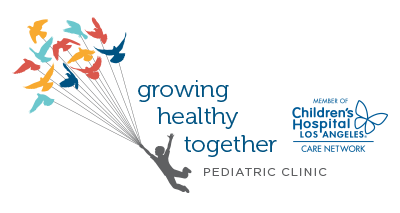
Sleep can be a commodity for both new and seasoned parents. Sleep deprivation can be very frustrating for new parents. Unfortunately for you and your kid, it has some serious effects.
Sleep loss in kids has been linked to behavior issues, poor academic performance, social difficulties, developmental delay, and weight problems. In this sleep disorder study, researchers studied 183 young children for trends in sleep. The results of the study showed that 41% had a sleep disorder, 23% had sleep onset insomnia (SOI), or trouble getting to sleep, 4% had night waking insomnia (NWI), and 14% had both. Sleep disorders affect a large number of children and sleep training may be part of the solution.
The American Academy of Pediatrics approves sleep training as a way to “improve infant sleep and reduce maternal depression in the short term.” The goal of sleep training is to eventually develop a sleep routine in which kids are going to bed at the same time and sleeping through the night. Naturally, this can be quite easy for some parents and quite difficult for others, as all babies are individuals.
In the world of sleep training, there are two hurdles to face: settling down to sleep, and getting back to sleep when awakened.
Sleep Training
0 – 3 Months
At this age, don’t try to impose any kind of sleep schedule or training on a newborn who can’t tell the difference between night and day. Newborns still need to feed every few hours and don’t produce enough melatonin yet to keep a sleep schedule. Swaddling works to help your infant feel comforted and happy. We also recommend that you try to sleep when your baby is sleeping in order to minimize your own sleep deprivation.
Beginning around 6 weeks, you can officially call your sleep training efforts a work in progress. You can begin to establish a bedtime routine at the same time every night. For example, start by giving a bath, reading a book, and feeding before bed, in the same order every night. You can also begin to wake your baby up at the same time every morning. Be sure to implement daytime naps, too, but don’t stress this early! A good sleep schedule will form over time.
4 – 6 Months
At this age, you are ready for sleep training! By now, you may have developed a more regular pattern with your little one. You may have dropped most night feedings. Your kid is capable of sleeping between 8 and 12 hours, depending on the individual. If you see a random change in behavior or your child is very resistant to any changes in the sleep schedule, you may want to stop and try again when stress is taken out of the equation.
6+ Months
At this age, kids know that their parents exist outside of their room. Your kid may get frustrated when you leave and will have a harder time getting to sleep. However, as your kid develops and goes through periods of high cognition (like during speech development around 12-16 months), sleep will become easier. Your baby will be less clingy and more focused on learning. This is a good time to work out any kinks in your schedule. Then, as your kid develops more independence (age 17-21 months), they will likely be a little needier. Try to tailor your efforts to times when your baby will not be as resistant. Remember that consistency is key.
Sleep Training Techniques
We find that most training techniques are effective if they’re consistent. There is no magical method for sleep training and there is no single way to find success, so it’s important to keep an open mind. Your preferred method may not work out for your kid and you might have to attempt something new and different. A trial-and-error method may help you to best help your baby to establish a good sleep schedule. Here are just four examples of methods you can use for your child.
- Cry-it-out (Ferber method): Put your baby to bed when they are still awake and allow them to cry shortly. You can come to comfort your kid, but don’t pick them up. Don’t let your baby cry endlessly, either. This method teaches babies to self-soothe.
- Gradual Approach (“no tears” approach): Parent(s) comfort babies right away, without waiting for them to “cry it out.”
- Scheduled Awakenings: Parents awaken their child before they might normally wake in order to phase out the instances of awakenings. Try to wake up your child 5 to 10 minutes before they normally wake.
- Harvey Karp (“Happiest baby”): Parents recreate the sounds and feeling of the womb by using a series of comforting techniques.
Tips to Maintain a Good Sleep Environment
- Maintain a dark environment. Check that your baby’s crib or bed is away from too much light from windows.
- Keep a sleep log to record feedings, sleep and wake times, diaper changes, and naps. A log may reveal patterns so you can find inconsistencies and correct them.
- Make sure that your crib isn’t too high or too low. Your baby shouldn’t be able to reach any toys or mobiles.
- Use bedding that isn’t too soft or loose and avoid using quilts, pillows, and thick blankets.
- Use a white noise machine and point it in the direction of noise (i.e. construction, loud neighbors, siblings, etc.).
It’s important for pregnant women to get enough sleep too. Click over to view Tuck’s informational page on how to choose the best mattress for pregnant women. Visit our friend’s website at Baby Doctor Mom for more insight and information about your family’s health! For questions or comments, respond to this blog or contact us!







